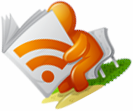If you use Windows XP on a local area network (LAN), and you save and open files in shared folders as part of a workgroup on a server, you can create a virtual drive whose drive letter appears in the My Computer window along with those of your local drives — a process referred to as mapping a network drive. To map a network drive, follow these steps:1. Click Tools-->Map Network Drive on the My Computer menu bar to open the Map Network Drive dialog box.2. Click the Drive drop-down list button and select the drive letter you want to assign to the virtual drive containing this network folder (note that the list starts with Z: and works backwards to B:) from the pop-up menu.3. Type the path to the folder on the network drive in the Folder text box or click the Browse button and select the folder directly from the outline of the network drives and folders shown in the Browse For Folder dialog box. Now click OK to close the Browse For Folder dialog box and return to the Map Network Drive dialog box (where the path to the selected folder now appears).4. If you want Windows to recreate this virtual drive designation for the selected network folder each time that you start and log on to your computer, leave the check mark in the Reconnect at Logon check box.If you only want to use this drive designation during the current work session, click the Reconnect at Logon check box to remove the check mark.5. If you're mapping the network drive for someone else who uses a logon different from your own, click the Different User Name hyperlink and enter the user name and password in the associated text boxes in the Connect As dialog box before you click OK.6. Click the Finish button in the Map Network Drive dialog box to close it and return to the My Computer window.The network folder that you mapped onto a virtual drive now appears at the bottom of the contents area under a new section called "Network Drives" and Windows automatically opens the folder in a separate window.After mapping a network folder onto a virtual drive, you can redisplay the contents in the My Computer window by double-clicking that drive icon.
To remove a virtual drive that you've mapped onto My Computer, click Tools-->Disconnect Network Drive; next click the letter of the virtual drive in the Disconnect Network Drives dialog box and then click OK. Windows then displays an alert dialog box warning you that files and folders are currently open on the virtual drive and that you run the risk of losing data if files are open. If you're sure that you have no files open on that drive, click the Yes button to break the connection and remove the virtual drive from the My Computer window.
If you use Windows XP on a local area network (LAN), and you save and open files in shared folders as part of a workgroup on a server, you can create a virtual drive whose drive letter appears in the My Computer window along with those of your local drives — a process referred to as mapping a network drive. To map a network drive, follow these steps:1. Click Tools-->Map Network Drive on the My Computer menu bar to open the Map Network Drive dialog box.2. Click the Drive drop-down list button and select the drive letter you want to assign to the virtual drive containing this network folder (note that the list starts with Z: and works backwards to B:) from the pop-up menu.3. Type the path to the folder on the network drive in the Folder text box or click the Browse button and select the folder directly from the outline of the network drives and folders shown in the Browse For Folder dialog box. Now click OK to close the Browse For Folder dialog box and return to the Map Network Drive dialog box (where the path to the selected folder now appears).4. If you want Windows to recreate this virtual drive designation for the selected network folder each time that you start and log on to your computer, leave the check mark in the Reconnect at Logon check box.If you only want to use this drive designation during the current work session, click the Reconnect at Logon check box to remove the check mark.5. If you're mapping the network drive for someone else who uses a logon different from your own, click the Different User Name hyperlink and enter the user name and password in the associated text boxes in the Connect As dialog box before you click OK.6. Click the Finish button in the Map Network Drive dialog box to close it and return to the My Computer window.The network folder that you mapped onto a virtual drive now appears at the bottom of the contents area under a new section called "Network Drives" and Windows automatically opens the folder in a separate window.After mapping a network folder onto a virtual drive, you can redisplay the contents in the My Computer window by double-clicking that drive icon.
To remove a virtual drive that you've mapped onto My Computer, click Tools-->Disconnect Network Drive; next click the letter of the virtual drive in the Disconnect Network Drives dialog box and then click OK. Windows then displays an alert dialog box warning you that files and folders are currently open on the virtual drive and that you run the risk of losing data if files are open. If you're sure that you have no files open on that drive, click the Yes button to break the connection and remove the virtual drive from the My Computer window.
Subscribe to:
Post Comments (Atom)






0 comments
Post a Comment